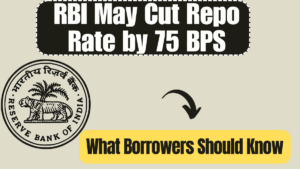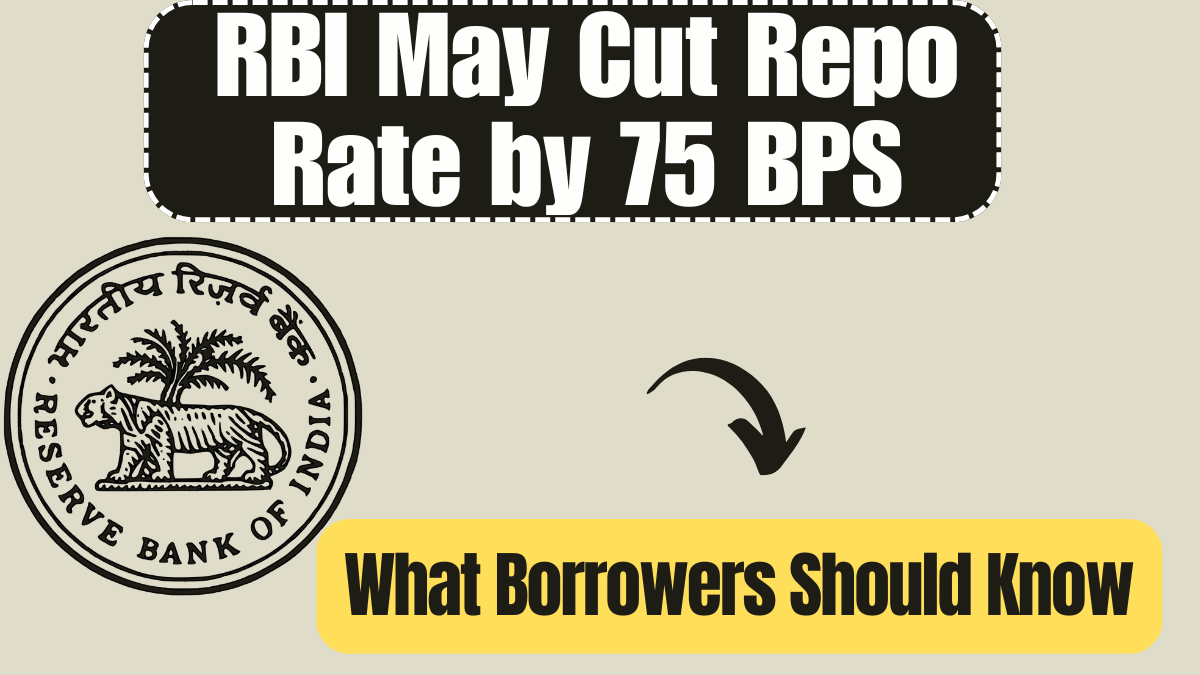In a major economic signal for borrowers and financial markets, the Reserve Bank of India (RBI) is likely to reduce the repo rate by 75 basis points (bps) during the Financial Year 2025–26, according to a report published by SBI Research. The first cut is expected to come into effect from April 1, 2025, making it a key move as India enters the new fiscal year.
This comes after the RBI reduced the repo rate by 25 bps to 6.25% on February 7, 2025, marking its first rate cut since May 2020. The latest forecast suggests more cuts could follow in August and October 2025, based on inflation trends and economic stability.

SBI Research Predicts A Gradual Rate Cut Cycle
In its detailed report titled “Same, Same But Different!”, released on March 20, 2025, SBI’s economic research team expects the central bank to ease monetary policy starting in April. The repo rate—used by the RBI to lend money to commercial banks—might be reduced by a total of 75 basis points over the course of the fiscal year. This move is likely influenced by the stable inflation environment and India’s overall macroeconomic outlook.
According to the report:
-
First rate cut: April 2025
-
Second rate cut: August 2025
-
Possible third cut: October 2025
This prediction aligns with RBI’s approach to stimulate economic growth and support credit demand amid declining inflation.
What Is the Repo Rate and Why It Matters?
The repo rate is the rate at which the RBI lends funds to commercial banks. It acts as a critical tool to manage inflation and liquidity in the economy. When the repo rate is reduced:
-
Borrowing becomes cheaper for banks
-
Banks pass on the benefit to consumers
-
Loan interest rates drop, making credit more affordable
Thus, a repo rate cut directly affects home loans, auto loans, and personal loans, especially those linked to external benchmarks.
Impact on Borrowers: Lower EMIs and Cheaper Loans
A further reduction in the repo rate will benefit borrowers, particularly those with floating rate loans linked to the repo rate. Since most banks have moved to external benchmark-based lending, interest rates now fluctuate with changes in RBI’s repo rate.
Borrowers can expect:
-
Lower EMIs on home, personal, and auto loans
-
Improved affordability for new borrowers
-
Savings on long-term loan interest for existing customers
Several banks have already reduced their home loan interest rates after the February 2025 rate cut. If the 75 bps cut plays out through FY 2025–26, more banks are likely to follow suit with further interest rate reductions.
READ MORE: DoorDash to Pay Settlement in 2025 – How to Claim Your Share?
Inflation and the Rate Cut Rationale
RBI adjusts its monetary policy primarily to control inflation. In February 2025, India’s Consumer Price Index (CPI) inflation dropped to 3.6%, its lowest in seven months, driven by a decrease in food and vegetable prices. This allowed the RBI room to consider an easing of rates.
According to SBI Research:
-
CPI inflation is expected to average 4.7% for FY 2024–25
-
It could further drop to 4.0%–4.2% in FY 2025–26
-
Core inflation may range between 4.2% and 4.4%
These projections support the case for a monetary easing cycle starting from April.
RBI’s Strategy Moving Forward
The RBI holds bi-monthly monetary policy meetings, and each review evaluates macroeconomic indicators such as:
-
Retail inflation trends
-
Credit growth
-
Global economic developments
-
Domestic demand conditions
The next monetary policy review is scheduled for early April 2025, where the first cut in FY 2025–26 could be officially announced.
FAQs
What is the repo rate?
The repo rate is the interest rate at which the RBI lends short-term funds to commercial banks. It influences loan and deposit interest rates across the economy.
How will the repo rate cut affect home loans?
A reduction in the repo rate usually leads to a decrease in interest rates on floating home loans, resulting in lower monthly EMIs for borrowers.
When will the next RBI monetary policy meeting take place?
The RBI’s next policy review is expected in the first week of April 2025, where the repo rate cut might be officially confirmed.
Will this impact fixed-rate loans?
No, repo rate cuts generally do not affect fixed-rate loans, as these do not fluctuate with RBI’s rate decisions.
What does this mean for the economy?
A lower repo rate promotes borrowing, which boosts consumption and investment, thereby supporting economic growth.
Click here to know more.
